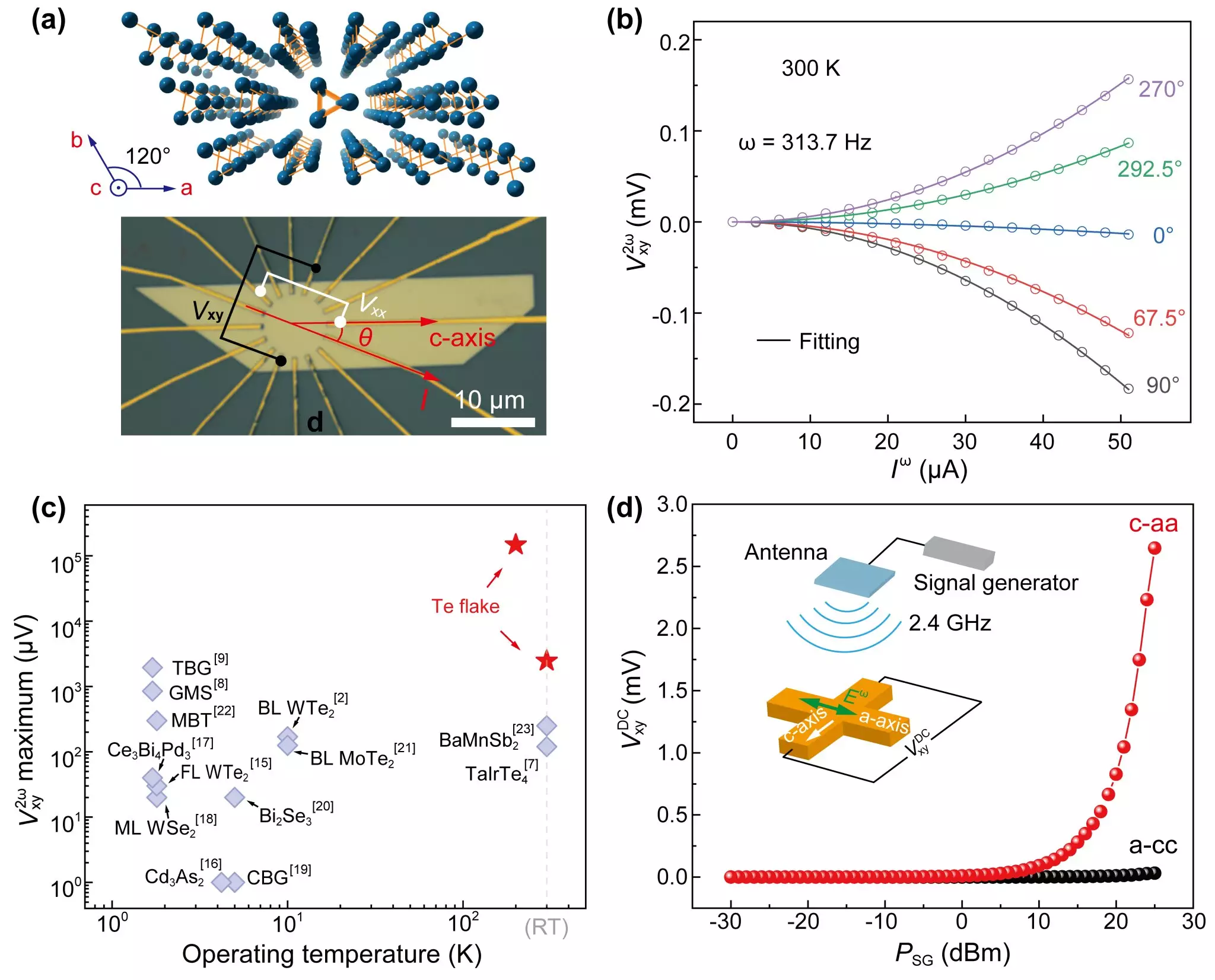In a significant advancement in semiconductor science, researchers have uncovered notable nonlinear Hall and wireless rectification effects in the elemental semiconductor tellurium (Te) at room temperature. This groundbreaking work, published in *Nature Communications*, showcases the potential of Te as a host for the nonlinear Hall effect (NLHE)—a phenomenon that has remained largely unexploited in practical applications due to historical challenges. The significance of this discovery lies not only in its immediate findings but also in the promising applications it opens up in the realm of electronic devices.
The nonlinear Hall effect refers to a second-order response characterized by the generation of second-harmonic signals when an alternating current (AC) is applied, all while circumventing the need for an external magnetic field. This characteristic has fascinated scientists due to its prospects in frequency-doubling mechanisms and rectifying technological innovations. Until recently, however, reports of NLHE were limited to specific materials like the Dirac semimetal BaMnSb2 and the Weyl semimetal TaIrTe4. Unfortunately, these materials exhibited suboptimal voltage outputs and significant constraints on operational temperatures, making them less than ideal for real-world applications.
Realizing the deficiencies in previous research, the investigative team shifted their focus to the elemental semiconductor tellurium. The atomic structure of tellurium, consisting of one-dimensional helical chains, disrupts inversion symmetry. This unique feature positions tellurium as a prime candidate for exhibiting significant NLHE at room temperature.
In a remarkable show of results, the researchers discovered considerable NLHE in thin flakes of tellurium, achieving a tunable Hall voltage output that could be manipulated using external gate voltages. At 300 K, the team reported a striking maximum second-harmonic output measuring an impressive 2.8 mV—this value marks a notable leap forward compared to prior records. The research further revealed that the observed effects in tellurium thin flakes arise mainly from extrinsic scattering, facilitated by surface symmetry disruption inherent in their structure. This understanding of the mechanisms driving NLHE signifies a substantial boost to our comprehension of nonlinear transport phenomena in solid materials.
Building on their NLHE findings, the research team took a bold step forward by replacing the conventional AC current with radiofrequency (RF) signals. This ingenious modification facilitated the realization of wireless RF rectification within tellurium thin flakes, establishing a stable rectified voltage output across a wide frequency spectrum ranging from 0.3 GHz to 4.5 GHz. Unlike conventional rectification strategies that depend on p-n junctions or metal-semiconductor interfaces, the innovative Hall rectifier derived from Tellurium’s intrinsic properties presents a broadband response even under zero bias conditions. This feature could revolutionize energy harvesting technologies and wireless charging systems, marking tellurium as a prominent candidate for future electronic applications.
The insights gleaned from this research not only advance our understanding of nonlinear transport mechanisms but also lay the groundwork for the future development of sophisticated electronic devices. The findings underscore the collaborative efforts of Prof. Zeng Changgan and Associate Researcher Li Lin from the University of Science and Technology of China (USTC), whose exploration of tellurium’s unique properties has illuminated pathways towards more efficient electronic systems. The implications of these breakthroughs extend far beyond theoretical advancements—they promise to reshape industries centered around energy consumption and wireless technology, heralding a new era for semiconductor research.


Leave a Reply